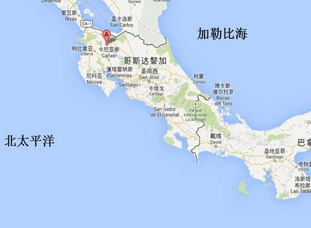Project recommendation
Contact us
tel:027-87580888
phone:18971233215
fax:027-87580883
email:didareneng@163.com
address: Inside the China University of Geosciences, 388 Lumo Road, Hongshan District, Wuhan (Wuhan)
 Projects show
Projects showHeber Geothermal Power Station
Geographical location
Located in the fertile Imperial Valley in California of American, Heber’s population is about 3000 and they are living on agriculture and animal husbandry. The eastern border of the Imperial Valley is the Colorado River/ Chocolate Mountains, and a part of the western border is Salton Sea/ Santa Rosa Mountains and the Coyote Mountains, then 10km south along is the U.S. - Mexico border. The Coachella Valley is in the north and connected.
Geological background
Heber geothermal field is located in the Imperial Valley, then the Imperial Valley and Coachella Valley constitute the Salton Trough ,also known as “Cahuilla?Basin”. Salton Trough on high temperature geothermal zone of the edge of the East Pacific ridge plate, which is constructed trough of the Gulf of California north to the land extension. Nearby the border along the shaft portion of the trough, the depth of the base is about 6 km.
Heber geothermal field in which formation is predominantly Late Jurassic sandstones with 15 to 30% porosity. The caprock of the geothermal field is shale, about 600m thickness, and the below of the shale is a geothermal reservoir. And the geothermal reservoir lithology is interbedded shale and sandstone with a thickness of about 2400-3000 meters, and the deeper where the shale is more thin of the shale thickness.
Heber area topographic map
The development history of the geothermal power station
1980, the United States Department of Energy (DOE) participates in specific business investment with the enterprise companies to develop geothermal and selected Heber as a commercial projects of two-cycle geothermal power generation.
Due to the mutual interference in the output of geothermal fluids with the nearby geothermal power plant, and no good solution for the corrosion of equipment and wells, trying this project failed not as smoothly as expected, so that in later projects main operating companies decided to terminate the project.
The ground power system
Heber geothermal power generation is a binary power in commercial scale, and a collection of small units use a modular to satisfy the requirements of large-scale production. After the project is completed, the full power can reach the 48MW. Flow chart below
Power generation schematics
Electricity generation process: The geothermal water is pressed into the heat exchanger, so that the working fluid consisting of 90% isobutane and 10% iso-pentane would be evaporated and drive the turbine to generate electricity. When using this approach, the geothermal water does not contact the turbine blade, can reduce direct flushing corrosion problems arise. However, the working fluid condenser and heat exchanger must be made of ferritic stainless steel. The plant began to supply 180 ℃ geothermal water in early 1985, the rate of 270 tons per hour, and gradually reached the practical level.
Previous >none










